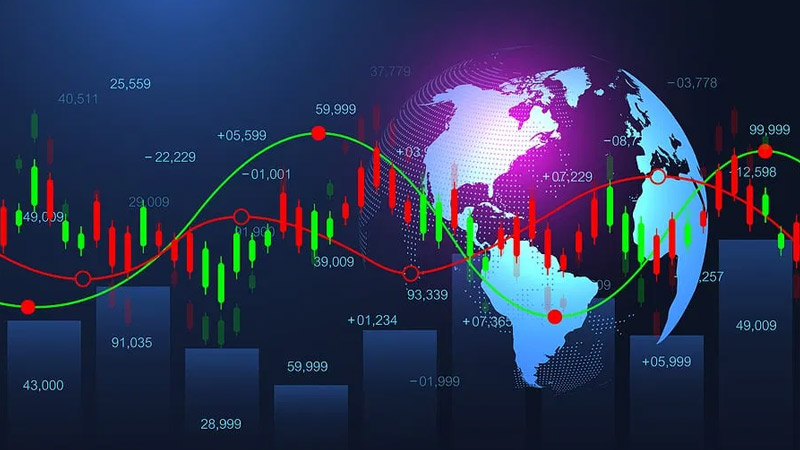The burgeoning domain of Decentralized Finance (DeFi) is rapidly evolving, and the emergence of a federal digital currency presents an intriguing convergence. This {potential{ synergy could revolutionize traditional financial systems by leveraging the stability of blockchain technology. A federal digital currency could improve economic participation, simplify transactions, and empower individual autonomy over holdings. However, challenges such as privacy concerns must be addressed to ensure a successful and fruitful integration of DeFi with a federal digital currency.
- Furthermore, the effect on existing financial institutions requires careful consideration.
- Ultimately, the future of DeFi in conjunction with a federal digital currency remains uncertain, presenting both challenges for innovation and transformation within the global financial system.
Zar vs Avax
copyright investors seeking diverse opportunities are increasingly analyzing different blockchain platforms. Two prominent choices in this landscape are its South African Rand (ZAR) and Avalanche (AVAX). While both possess unique strengths, understanding their key differences is crucial for making strategic investment decisions. ZAR, a fiat currency, offers predictability, but its integration with blockchain technology remains restricted. In contrast, AVAX, a decentralized blockchain platform, provides scalability and supports a robust ecosystem of decentralized applications (copyright).
- Factors such as transaction expenses, network safety, and developer adoption play a vital role in this comparative analysis.
Ultimately, the most beneficial choice between ZAR and AVAX depends on an investor's personalized needs and risk tolerance.
Avax Price Prediction 2030: Navigating the Future of Decentralized Finance
Its future of decentralized finance (DeFi) is full of potential, with Avalanche (AVAX) emerging as a prominent contender. As we look ahead to 2030, experts are offering to estimate the trajectory of AVAX's price.
Numerous of factors will influence the performance of AVAX in the coming years, including: the growth of the DeFi ecosystem, regulatory actions, technological advancements, and overall market sentiment.
Bullish forecasts suggest that AVAX could climb in value, potentially reaching new all-time highs as DeFi adoption continues. However, bearish analysts warn that regulatory hurdles and market volatility could limit AVAX's growth.
Ultimately, predicting the price of any copyright in 2030 is a complex task. The success of AVAX will depend on its ability to adapt to the changing landscape of DeFi and retain the support of users and investors.
The Bitcoin's Meteoric Rise
Stepping back in time to 2012, we find a period marked by rapid growth and remarkable price swings. Pioneering investors experienced Bitcoin's value soar to new heights, capturing the attention of both n00bs and skeptics. The driving forces behind this explosion were a mix of factors, including increasing acceptance among businesses, innovative technological progress, and the promise of a decentralized financial structure.
A Journey Through Digital Currency: From ZAR to Bitcoin and More
Digital currencies have undergone a fascinating evolution since their humble beginnings. Early experiments like the Electronic Cash system in the late 1980s paved the way for later innovations. One of the forefathers of modern digital currencies was ZAR, a electronic payment system developed in the early 1990s. ZAR, however, was limited in its scope and adoption.
The emergence of Bitcoin in 2009 marked a paradigm shift in the world of digital currencies. Its decentralized nature and cryptographic safeguards resonated with many, leading to its widespread adoption. Bitcoin's success spurred a boom in the development of other cryptocurrencies, each with its own individual features and purposes.
From Ethereum's smart contract capabilities to Litecoin's focus on faster transaction speeds, the digital currency landscape has become incredibly multifaceted. This constant development shows no signs of slowing down, with new projects and applications emerging continuously. The future of digital currencies holds immense potential, promising to revolutionize various sectors from finance to politics.
Blockchain Breakthroughs: Exploring the Impact of Federal Digital Currencies on Financial Systems
The emergence from federal digital currencies (FDCs) is poised to profoundly reshape the global financial landscape. Such cryptocurrencies, issued and regulated by central banks, hold the potential to revolutionize traditional banking systems, optimizing transactions and reducing financial risks.

The implications of FDCs are vast and multifaceted. Firstly, they could facilitate greater financial inclusion by providing access to banking services in underserved communities. Secondly, the traceability inherent in blockchain technology could improve regulatory oversight and suppress illicit financial activities. Thirdly, FDCs may be able to accelerate economic growth by lowering transaction costs and streamlining cross-border payments.
- However, the integration of FDCs also presents certain challenges. Regulators must carefully consider the potential impact on monetary policy, privacy, and cybersecurity.
- Moreover, the success of FDCs will depend public trust and adoption.
- Awareness campaigns will be crucial in addressing concerns and promoting widespread adoption of this innovative technology.
Ultimately, find more the effect of FDCs on financial systems remains to be observed. Yet, their capability to transform the way we bank is undeniable. As this technology continues to evolve, it will be fascinating to monitor its evolution and its profound influence on the global economy.
Advised link:
www.marketwatch.com